How Does a Hybrid Engine Work? | 5 Affordable Hybrid Models
A hybrid car is a combination of gasoline power and electric vehicles. Therefore, it is a product of gasoline and electric vehicles. The combination of the two vehicles brings up a hybrid kind of engine.
The cars are known as (HEV’s) they use the benefit of gasoline engines and electric motors that when brought together and configured to improve some qualities of the car.
These include an increase in power, fuel economy and or additional auxiliary for electric devices. The question is, how does a hybrid engine work? This problem is especially real for those interested in environmental issues.
What is a Hybrid Engine?
The meaning of hybrid engine refers to the propulsion system for a hybrid car. It means combining two systems, usually a combination of either gasoline or diesel and electric motors to propel the vehicle. The main advantage of hybrid engines is improved fuel efficiency and less CO2 emissions than traditional petrol or diesel engines.
How Does a Hybrid Car Work?
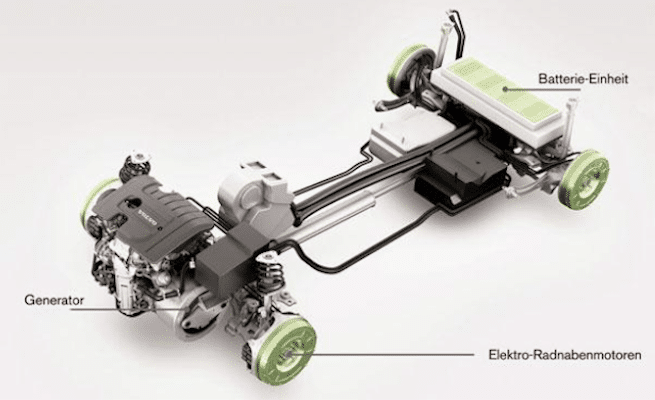
There are several different designs available from manufacturers for hybrid cars. A parallel hybrid design connects an electric motor and gasoline engine to a cars conventional transmission to blend the two power sources. In a series design, the electric motor provides power to the wheels, and the gasoline engine engages to recharge the hybrids battery, which in turn drives the electric motor.
A plugin hybrid recharges the battery whenever it is connected to an external vehicles power supply. The gasoline engine only kicks in when the battery is fully depleted. Mild hybrid designs provide an assist to the gasoline engine; however, the electric motors cannot drive the car alone. They typically offer extra power to the transmission when starting from a standstill in vehicles that shut down the engine to conserve the Hybrid’s fuel when the car comes to a full stop.
How long does a hybrid engine last?
There have been reports of hybrid batteries lasting from 10 to 15 years and from 70,000 to over 200,000 miles. Typically, it depends on driving conditions, charge cycles, and maintenance of the gasoline engine.
Who invented the hybrid technology?
Ferdinand Porsche built the first hybrid car in 1899 using a gasoline-powered engine to provide hybrid and electrical power to drive an electric motor. The vehicle was the Lohner-Porsche Mixte.
What kind of battery does a hybrid car use?
Initially, the batteries in hybrid cars were nickel-metal hydride batteries. In later years’ batteries in hybrid vehicles have migrated to lithium-ion batteries. These are the same batteries used in consumer electronics, e.g., mobile smartphones. For example, Tesla has been using Lithium-ion batteries for some time, and Toyota has recently begun using these batteries as well.
Main Advantages of Using Hybrid Engines
The primary benefit of electric driving is significantly improved fuel savings, saving money, and making a positive contribution to the environment through lower CO2 emissions.
Here are some of the benefits of using hybrid engines:
- Better gas mileage and environment-friendly
- Financial incentives available
- Less dependence on fossil fuels
- Full hybrid-electric vehicles have fewer components
- Regenerative braking systems
Fuel efficiency
As gasoline prices increase, hybrid cars and full electrics are becoming more attractive to consumers. The best of the vehicles on the market today achieve better than 50 miles per gallon, and full electrics are producing as much as 370 miles per charge. However, driving conditions, driving systems, and driving habits can significantly affect these numbers.
Tax Rebates in some states
There are tax rebates available from Federal and State agencies for purchasers of hybrid cars. These incentives vary state by state and also the vehicle that is purchased. E.g., Hybrid, full electrics. Each state is administered separately. Car dealerships can provide details on your state and information about state and federal environmental protection agency details.
Less carbon emissions
Since hybrid cars use less gasoline, they emit less carbon, CO2, as well. The reduction in carbon emissions is dependent on the gas mileage they obtain. Fully all-electric battery vehicles do not emit any carbon CO2into the air; however, electricity, generated from coal-fired electrical plants emit far more CO2 than is saved. Regenerative hybrid cars can be the most efficient from an emissions perspective. They are using renewable energy.
Hybrid cars hold their value
When hybrids initially came into the market, they did not keep their value very well. Recently with higher gas prices and more focus on the environment, reports are surfacing, suggesting that hybrids hold their value 4% better than conventional cars. As gas prices rise, hybrids cars are becoming more attractive than racing cars.
Excellent torque performance
Hybrid cars are designed to reduce fuel consumption by adding in an electric motor, and regenerative systems produce electricity to charge the battery. The batteries are heavy, and the gasoline engine is usually smaller to further reduce fuel consumption. While they provide consistent torque performance, starting from a stopped position will be slower operating on the electrics for the average hybrid car until the gasoline engine kicks in.
Eliminate idling problems
Most hybrid cars will shut the gasoline engine off when the vehicle comes to a stop at stop signs or stoplights. This is done to reduce fuel consumption. The car does not idle while sitting, and the engine only starts up after the electric motors have got the vehicle moving and accelerated, further reducing fuel consumption. This approach virtually eliminates idling problems, way better than older cars conventional engines.
Uses light materials
Hybrid cars are typically designed with lighter materials and are generally smaller in size to reduce fuel consumption. Recently many larger model cars are adding hybrid capabilities to improve their overall fuel efficiency. The capacity of the battery counteracts weight loss. While smaller batteries reduce the range, regeneration capabilities charge the battery. E.g., while braking.
Regenerative braking
Regenerative braking is used on many hybrid vehicles to recover energy from the process of braking to generate electricity and store it in the battery for later use. The brakes take the kinetic energy of the vehicle and convert it to power. The amount of kinetic energy that can be recovered depends on the weight of the car, the speed the automobile is traveling, and the efficiency of the system. Tesla Model claims they can improve on average 64% of the energy.
The engine tends to be smaller
Hybrid cars are depending on the electric motors to start from a standstill and to provide an assist at higher speeds. Engines can be designed to be smaller as a result, which in turn improves fuel consumption in addition to the regeneration of electricity from braking.
Performs well on stop and go traffic
City driving usually involves more starts and stops, which consumes a great deal of energy. By using electrical power that has been generated from braking, shutting the engine off while stopped in traffic and using the electrics to get the car rolling fuel efficiency is increased. Stop and go traffic is probably the ideal situation for most hybrid vehicles.
Main Disadvantages of Using Hybrid Engines
Here are some disadvantages that come with owning a hybrid vehicle:
- Lower overall power – even with twin powered vehicles (gas engine plus electric motor)
- More Expensive to purchase – unless rebates and discounts have been included
- Mechanics – must know both systems
- Less vehicles power (exception Tesla Model)
- Can be more expensive than traditional gasoline cars
- Poorer handling due to the weight of batteries (exception Tesla Model)
- Higher and specialized maintenance requirements
- Higher voltage in batteries
Expensive maintenance
In general terms, the cost of maintenance of a hybrid car should not cost any more than non-hybrid vehicles; however, there are two drive systems, and then there is the battery. Manufacturers claim the battery will last the lifetime of the car. If you do have to replace the battery, get set to spend a couple thousand unless it is still under warranty.
High voltage exposure in car accidents
The battery can be compromised as a result of a car accident. This can lead to exposure of electrical cables with the danger of electrocution, and leaking of chemicals from the battery. Sparking can cause fires and explosions. First responders to car accidents involving hybrid cars must assess the threat presented by high voltages from car batteries, and chemical release.
Power Performance
Generally, the engine in a hybrid car is always smaller than comparable with a cars conventional engine. As a result, the power performance is also lower, leading to slower starts and more moderate acceleration. The electric motors in some hybrids will provide an assist to compensate for this lower power. Smaller engines use less fuel and contribute less CO2 emissions.
Cost more than a standard car
As hybrids become more popular and are mass-produced, their cost is decreasing; however, they generally cost between five to ten thousand more than conventional gas vehicles. Many governments have offered incentive rebates to counter the increased prices. The objective is to reduce emissions, reduce global warming, and improve the environment by incenting buyers to purchase fuel-efficient hybrids.
Are Hybrid Cars Worth the Money?
This is a complicated question since the answer depends on many different factors. For example:
- What was the original cost of the car?
- What incentives or rebates were available at the time of purchase?
- High gasoline prices work in favor of the Hybrid
- What are the total miles driven each year?
- What is the car used for – consumer vs. business, e.g., taxi
- Value perceived regarding environmental contribution
These factors will determine your personal answer to, “are they worth the money?”. Calculations for various hybrid cars range from 4.5 years to as high as 11.9 years for the payback period.
At what speed does a hybrid use gas?
Most hybrids run on electricity from a full stop, light throttle, and low speeds. Depressing the gas pedal to accelerate will start the gas engine to provide an assist to the electric motors. A battery that is depleted beyond a designated level specified by the manufacturer will also cause the engine to start and generate power to recharge the battery and also provide power to the vehicle.
Can hybrid cars run on gas only?
Hybrid vehicles can run on gas alone, although performance in terms of heavy acceleration may suffer since the electric motors usually engage to assist. If you run out of gas, your car can run until the battery fully discharges and your vehicle will come to a full stop. Check with the dealer concerning this question since each hybrid vehicle is designed differently.
Hybrid Electric Vehicle vs. Electric Cars
Hybrid battery electric vehicles have two drive systems, usually a gasoline engine and electric motors that work in series or parallel format to power the car while driving. Electric vehicles are powered by electricity only from batteries that are charged once a day or more often depending on use.
Electric vehicles do not have a backup. Once the battery is discharged, the car will stop. In the last few years, most car companies have added hybrid and electrical vehicles to their line up. The advantages vary a great deal between suppliers.
Different Type by the Drivetrain
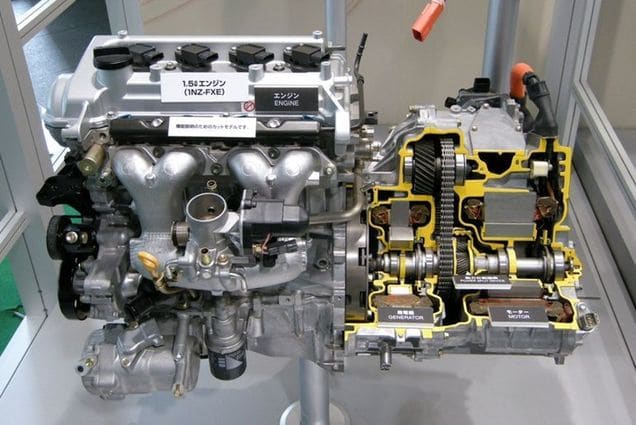 Hybrid cars can be sorted into several different types. They are series hybrid, parallel Hybrid, combined Hybrid, and mild hybrids. Mild hybrids cannot drive the car with the electric motor. Instead, it provides an assist or range extender function to the gasoline engine to improve fuel economy.
Hybrid cars can be sorted into several different types. They are series hybrid, parallel Hybrid, combined Hybrid, and mild hybrids. Mild hybrids cannot drive the car with the electric motor. Instead, it provides an assist or range extender function to the gasoline engine to improve fuel economy.
Series hybrid
A series hybrid design calls for the electric motor to provide all of the power to the drive wheels. There is a gasoline engine provides power to recharge the battery. Some drivers find it a bit unusual for the gasoline engine to be revving while the car is stopped at a traffic light. The battery is being recharged in this situation.
Parallel Hybrid
The parallel Hybrid is the most common design with a gasoline engine and an electric motor that together provide power to the transmission. This design is available for automatic, standard, and CVT transmissions. The transmission type and the size of the engine are the main factors that determine how quickly the car will accelerate.
Combined Hybrid
Combined hybrids can be operated in series or parallel, powered by a gasoline engine and/or an electric motor and they can be recharged from the power grid. They are considered full hybrids and can run on battery power alone. These vehicles can be used for short trips as well as for longer trips that require power from the gasoline engine.
Different Types by the Power Source
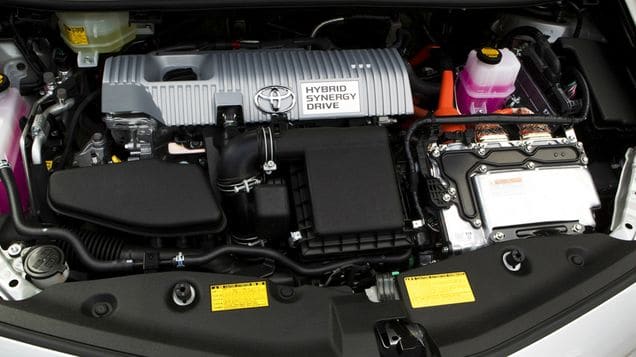 There are several hybrid power sources and alternative fuels under development in addition to the standard electric – gasoline powered systems. These systems are being tested and evaluated for use in consumer markets. They are designed to work in a series or parallel configuration.
There are several hybrid power sources and alternative fuels under development in addition to the standard electric – gasoline powered systems. These systems are being tested and evaluated for use in consumer markets. They are designed to work in a series or parallel configuration.
Hydraulic Hybrid
A hydraulic accumulator stores the energy instead of a battery and a variable displacement pump replaces the electric motor-generator. There is a bladder filled with nitrogen gas, which is compressed and stores the energy for later use in powering the vehicle.
Internal combustion engine hybrid
The internal combustion engines-hybrid combination is the most popular at present with batteries charged by the internal combustion engine and regenerative braking systems. Several models also incorporate charging of the battery from the grid as well.
Pneumatic Hybrid
A gasoline engine drives a compressor to compress air which is stored for later use in powering the drive train. These vehicles are known as air-powered cars, although a gasoline engine powers the compressor and the car. Also, regenerative braking energy is captured and stored to provide the vehicles power.
Human power and environmental power hybrids
Experimental vehicles are being tested that incorporate human power; grid charged batteries and on-board fuel cells also to charge the batteries.
Fuel cell vehicles
The hydrogen fuel cell provides the electric power to charge the on-board batteries as well as a super capacitor to deliver power to the drive train. Capacitors are often used to reduce the size of the fuel cell.
What is the Atkinson Engine Cycle?
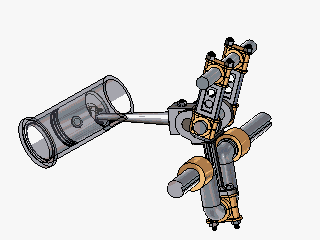 The latest in hybrid engine production is the Atkinson cycle engine, initially patented in the USA at the end of the 19th century. The current Atkinson engine cycle is not very different from the old one.
The latest in hybrid engine production is the Atkinson cycle engine, initially patented in the USA at the end of the 19th century. The current Atkinson engine cycle is not very different from the old one.
Now to understand the function of the new one logic has it that one has to understand the working of the old one (Otto cycle). This is because it turns its crankshaft twice in a four-stroke cycle. It also has a delay in the intake of the valve timing, which is much more the same as the Miller cycle.
The Otto cycles crankshaft is built on a different axis and its connections made by levers. This made the piston revolve four times. The four-stroke process took place once other than twice, which made the valves not to open directly from the crankshaft.
Additionally, the process led to the ignorance of the functions of the camshaft. Building the Atkinson cycle engine was to counteract the original by making the compression stroke shorter than the power stroke. This reduces the expansion ratio to a smaller proportion. Therefore, the engine can attempt a reversible adiabatic process, which the amount of heat transferred after the combustion process is zero.
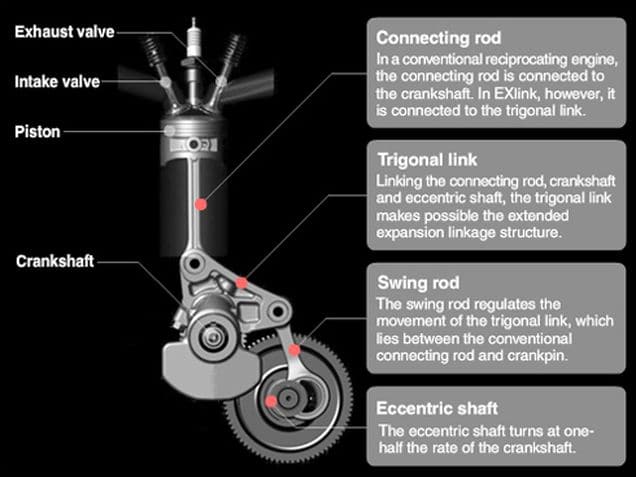
Affordable Models On The Market
If you are thinking of buying a regular gasoline powered car click here, otherwise here are a few hybrid options to consider:
Ford Escape
 The Atkinson’s engine cycle is in many hybrid cars today, which may include the Toyota Prius, Honda Insight, Chevrolet Volt, and Ford Escape Hybrid. These cars are easily within reach of ordinary people meaning that more and more people have access to fuel-efficient vehicles. This type of access to fuel-efficient cars is necessary when it comes to conserving fuel and our environment. More car companies should adopt hybrid engines just as these businesses do.
The Atkinson’s engine cycle is in many hybrid cars today, which may include the Toyota Prius, Honda Insight, Chevrolet Volt, and Ford Escape Hybrid. These cars are easily within reach of ordinary people meaning that more and more people have access to fuel-efficient vehicles. This type of access to fuel-efficient cars is necessary when it comes to conserving fuel and our environment. More car companies should adopt hybrid engines just as these businesses do.
For instance, Ford uses a double-overhead-cam engine, and its fusion with other hybrids enables it to haul less weight and therefore economize on the energy used. It, therefore, covers excellent mileage on the highways than any other vehicle on our roads today. It can travel up to seventy-five miles per hour, and it allows the electric motor to do a lot of work. This enables the gasoline engine to work alone.
Toyota Prius
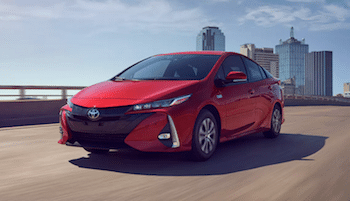 Hybrid car engines or engine system use a high technology that enables the car to regenerate braking. The availability of the electric motor drives the wheels to slow down due to its application of resistance to the drive train. The energy generated after that functions as a motor and functions as a generator produces. The energy converted not wasted since it is stored in the battery for later use.
Hybrid car engines or engine system use a high technology that enables the car to regenerate braking. The availability of the electric motor drives the wheels to slow down due to its application of resistance to the drive train. The energy generated after that functions as a motor and functions as a generator produces. The energy converted not wasted since it is stored in the battery for later use.
The hybrid powertrain combines the availability of the electric motors helps the engine to increase power and assist in overtaking, accelerating, and hill-climbing. This enables the Hybrid to run on a small engine, which is more efficient. The Toyota Prius Plugin Hybrid is the most popular plugin electric vehicle models that allow you to save fuel.
Toyota Yaris
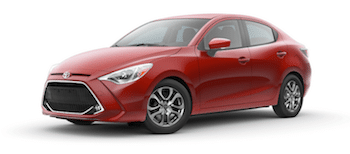 Toyota is also making tremendous strides when it comes to hybrid engines and more specifically, the Atkinson engine. The worldwide manufacturer, with an asset base of $377 billion, is promoting the hybrid engine through the Toyota Aygo (Yaris). This Toyota model comes with a 1.3 liter Atkinson engine that takes advantage of a high compression ratio, i.e., 13.5 helping it to achieve over thirty-eight presence thermal efficiency. This is not a significant step in fuel efficiency, but it is a good step in the right direction.
Toyota is also making tremendous strides when it comes to hybrid engines and more specifically, the Atkinson engine. The worldwide manufacturer, with an asset base of $377 billion, is promoting the hybrid engine through the Toyota Aygo (Yaris). This Toyota model comes with a 1.3 liter Atkinson engine that takes advantage of a high compression ratio, i.e., 13.5 helping it to achieve over thirty-eight presence thermal efficiency. This is not a significant step in fuel efficiency, but it is a good step in the right direction.
Manufacturers and consumers now realize the futuristic value of hybrid engines championed by the Atkinson engine. They understand that these engines do more than reduce fuel consumption and protect the environment. Hybrid engines lead to instant torque and cut costs when it comes to maintenance. It is time for people to understand how does a hybrid car engine work? The information mentioned above can help you to know how it works.
Honda Insight
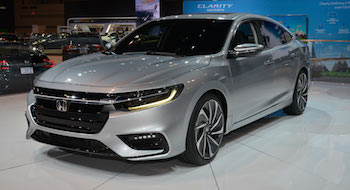 Even though the Honda Civic hybrid was discontinued in 2015, the new Honda Insight Hybrid model comes with an advanced hybrid powertrain that can provide over 50 mpg city rating. Also, it delivers outstanding horsepower and torque performance with it’s Atkinson Cycle 1.5 liter engine.
Even though the Honda Civic hybrid was discontinued in 2015, the new Honda Insight Hybrid model comes with an advanced hybrid powertrain that can provide over 50 mpg city rating. Also, it delivers outstanding horsepower and torque performance with it’s Atkinson Cycle 1.5 liter engine.
The Honda Insight comes with a two-motor system that plays a crucial role in the performance of the car. The cars batteries are capable of outstanding energy storage, and with an eight-year limited warranty, they are made for long term use.
Hyundai Sonata
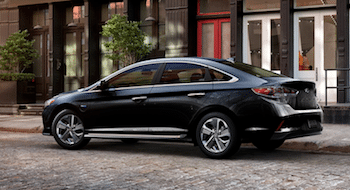 The Hyundai Sonata Hybrid comes in four different hybrid models that fit any budget. You can find a plugin electric vehicle that has a 28 MPG all-electric range with a 39 MPG combined performances as well. If you are not worried about electricity generating expenses, a Hyundai Sonata Hybrid car can be an excellent option to own.
The Hyundai Sonata Hybrid comes in four different hybrid models that fit any budget. You can find a plugin electric vehicle that has a 28 MPG all-electric range with a 39 MPG combined performances as well. If you are not worried about electricity generating expenses, a Hyundai Sonata Hybrid car can be an excellent option to own.
Owning a plugin electric vehicle will give you the flexibility of utilizing both gas and electricity as the energy source for the motor. The Hyundai models have a driving range of 600 miles, and this is huge to save fuel expenses in the long run. The hybrid powertrain limited warranty for the Hyundai Sonata can be up to 10 Years or 100 thousand miles.
Chevrolet Volt
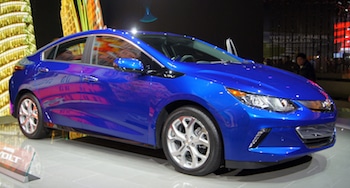 The Chevrolet Volt plugin hybrid has outstanding performance when it comes to energy storage. The plugin electric vehicle offers a 53 MPG of pure electric miles and a 420 Miles combined full charge and tank range. With up to 8 years limited battery warranty, the Chevrolet Volt is also a model to consider when you are on the market for a plugin hybrid.
The Chevrolet Volt plugin hybrid has outstanding performance when it comes to energy storage. The plugin electric vehicle offers a 53 MPG of pure electric miles and a 420 Miles combined full charge and tank range. With up to 8 years limited battery warranty, the Chevrolet Volt is also a model to consider when you are on the market for a plugin hybrid.
The Chevrolet Volt has two electric motors that not only optimizes efficiency but also provides a smooth transition when the charge is running low. With a 53-mile battery range, this beats any conventional car fuel performance by a good chunk. The Volt comes with regenerative braking technology that helps recharge the battery every time you brake thru kinetic energy.
F.A.Q
Why are Hybrid Cars Good for the Environment?
Hybrid cars burn less fossil fuel and contribute less CO2 to the environment as a result. Engines are smaller, cars are lighter even with the heavy battery pack, and the electric motors power the vehicle initially when the engine shuts off when the vehicle is stopped. Also, many hybrids use electric motors to assist in providing power at highway speeds.
- Co2 emissions: The CO2 emissions attributed to a hybrid car come from two sources. Not surprisingly, the car’s engine emits about a third less CO2 compared to conventional engines, which is a significant saving. The second source is based on where the electricity comes from. Hybrid cars and electric cars that are plugged in receive their power from the electrical system. Countries that generate power using coal-fired generation plants emit vast quantities of CO2.
- Hybrid car battery: Hybrid cars have been using nickel-metal hydride based batteries to power the electric motors. This is a mature technology and has been in use for many years. The lithium-ion battery is beginning to replace the older type of battery in new hybrid cars. They store more energy per pound than the older nickel-metal hydride batteries. The battery is critical to the fuel consumption savings for these cars.
- Fuel consumption: Improved fuel consumption is achieved in hybrid electric cars in several ways. These include:
-
- Idle off when the car comes to a full stop
- Regenerative braking recharges the battery
- Electric motors provide power assist
- Engines are smaller and depend on the electric motor for support
- Electric-only drive at start and low speeds with mild acceleration
It has been reported that some hybrid cars have a 38% advantage over non-hybrid vehicles.
Are there any commercial vehicles with a hybrid system?
Commercial vehicles, including pickup trucks, have not progressed as quickly with hybrid solutions. The design issues associated with heavier vehicles, higher torque requirements related to heavy loads present unique design challenges. Engines cannot necessarily be downsized in hybrid trucks that would produce less power to make way for electrical components and batteries. There are hybrid bus systems that use a combination of natural gas and diesel fuel to provide energy.
What is a plugin hybrid electric vehicle or (PHEV)?
PHEV’s are full hybrids. They usually have a larger battery pack, and they can be recharged from the grid. They can be driven for longer distances on battery electric-only power prior to the gasoline engine starting and providing power. They also tend to have better efficiency ratings than regular hybrid cars. A variety of manufacturers have produced the PHEV for various markets.
For example, the Toyota Prius plugin electric vehicle is a popular hybrid model that has batteries that can allow you to drive with only electricity because of it’s capacity of energy storage. In cities like New York City and San Francisco, a new Toyota Prius can be a great option if you want to save fuel because of it’s EPA-estimated 25 miles allelectric range.
Final Thoughts
If you want to save fuel, purchasing gas vehicles or a conventional car makes it almost impossible. Other full-electric automobiles like the Tesla Model does not give you the versatility that a hybrid vehicle provides. Also, hybrid electric vehicles work with renewable energy that helps the environment by emitting less CO2 emissions than conventional engines.
When looking for a plugin hybrid, make sure it has regenerative braking technology that drives the wheels to slow down an recharge the batteries using kinetic energy. Also, make sure you understand the range extender option that comes with the vehicle. By utilizing a hybrid system, you will notice significant fuel savings in the long run. The overall hybrid technology is incredible.
For tax rebates, check with the federal environmental protection agency, and the current state laws. Most car companies that sell hybridelectric vehicles and fully electric cars like the Tesla Model are capable of assisting you with the tax rebate information.
Last Updated on: July 13, 2022

